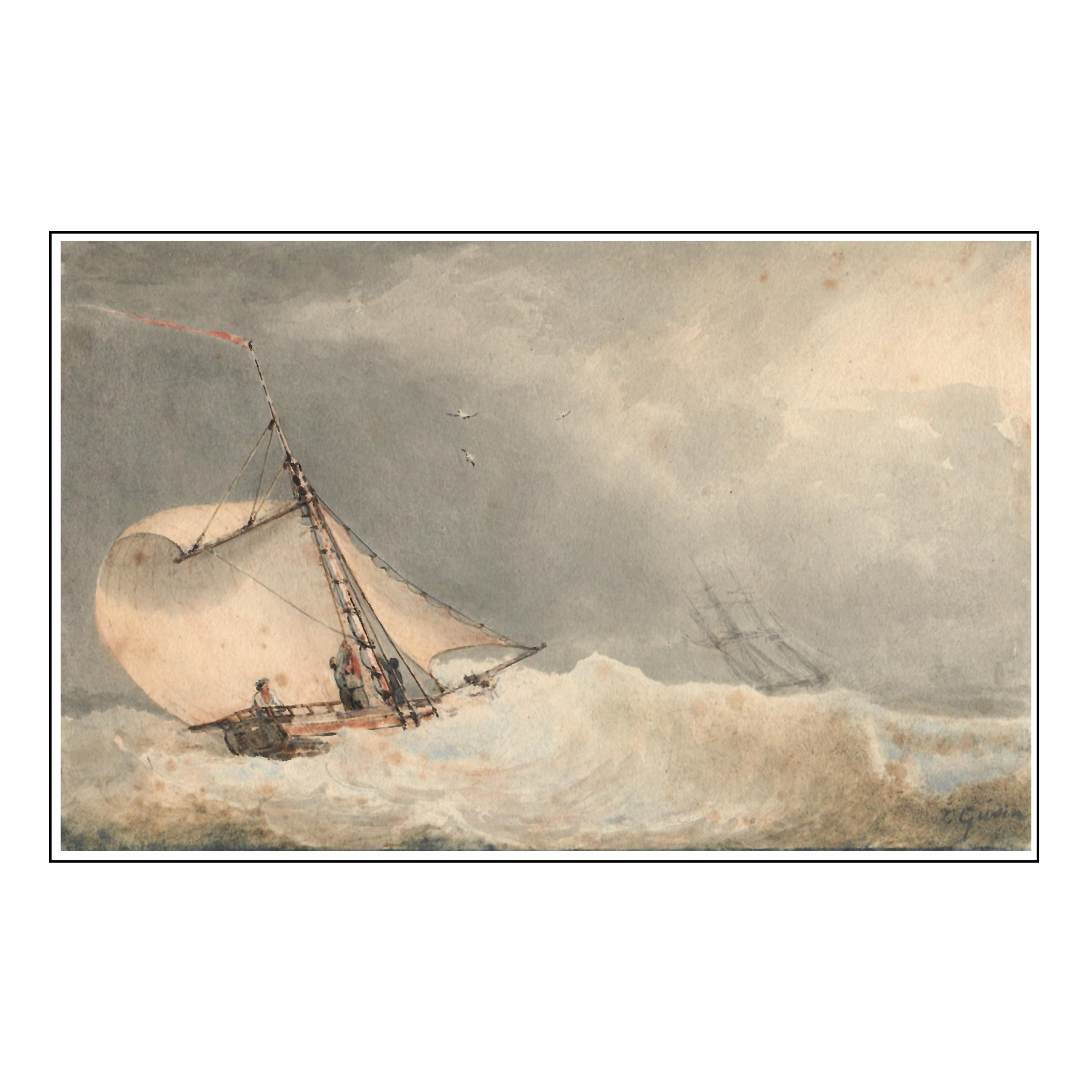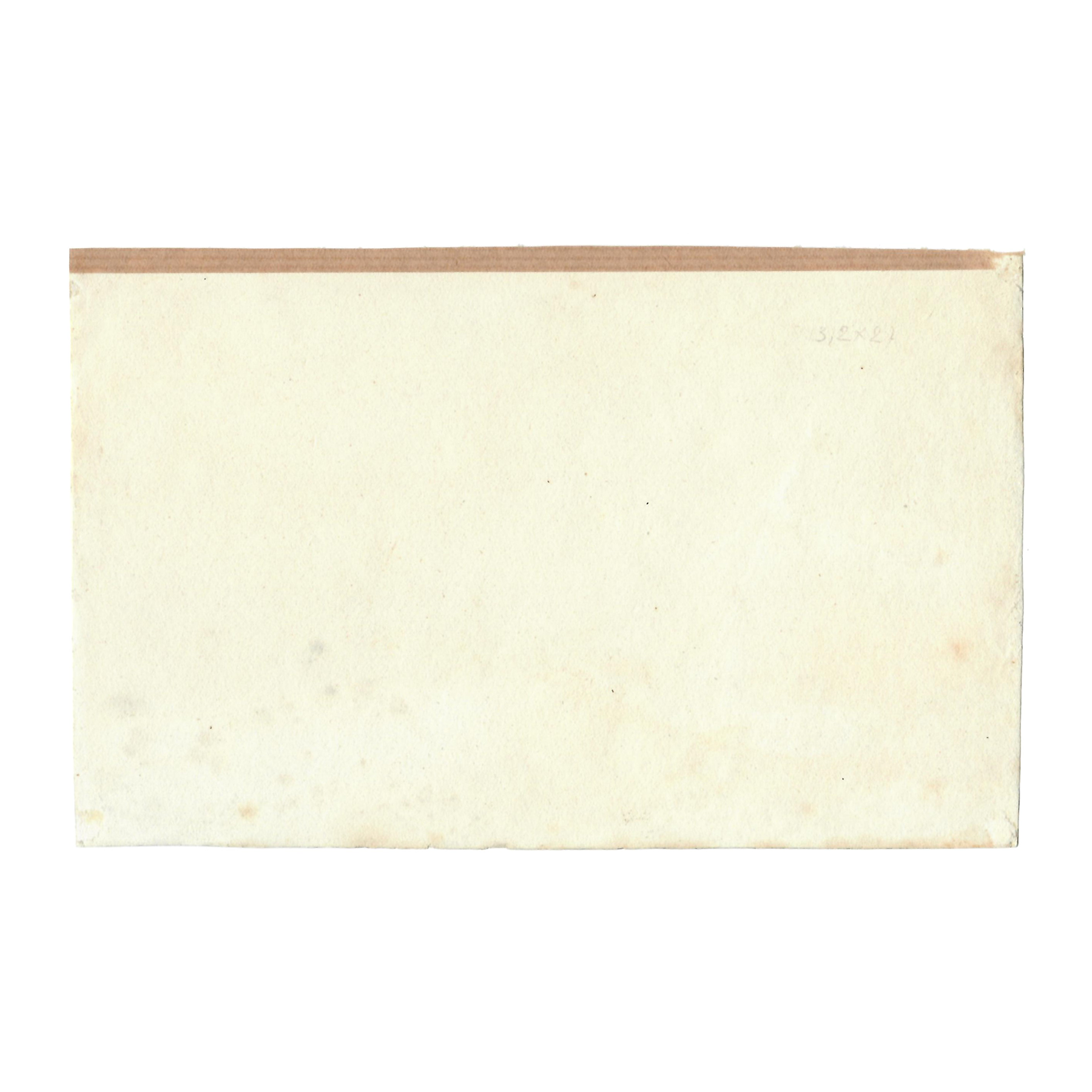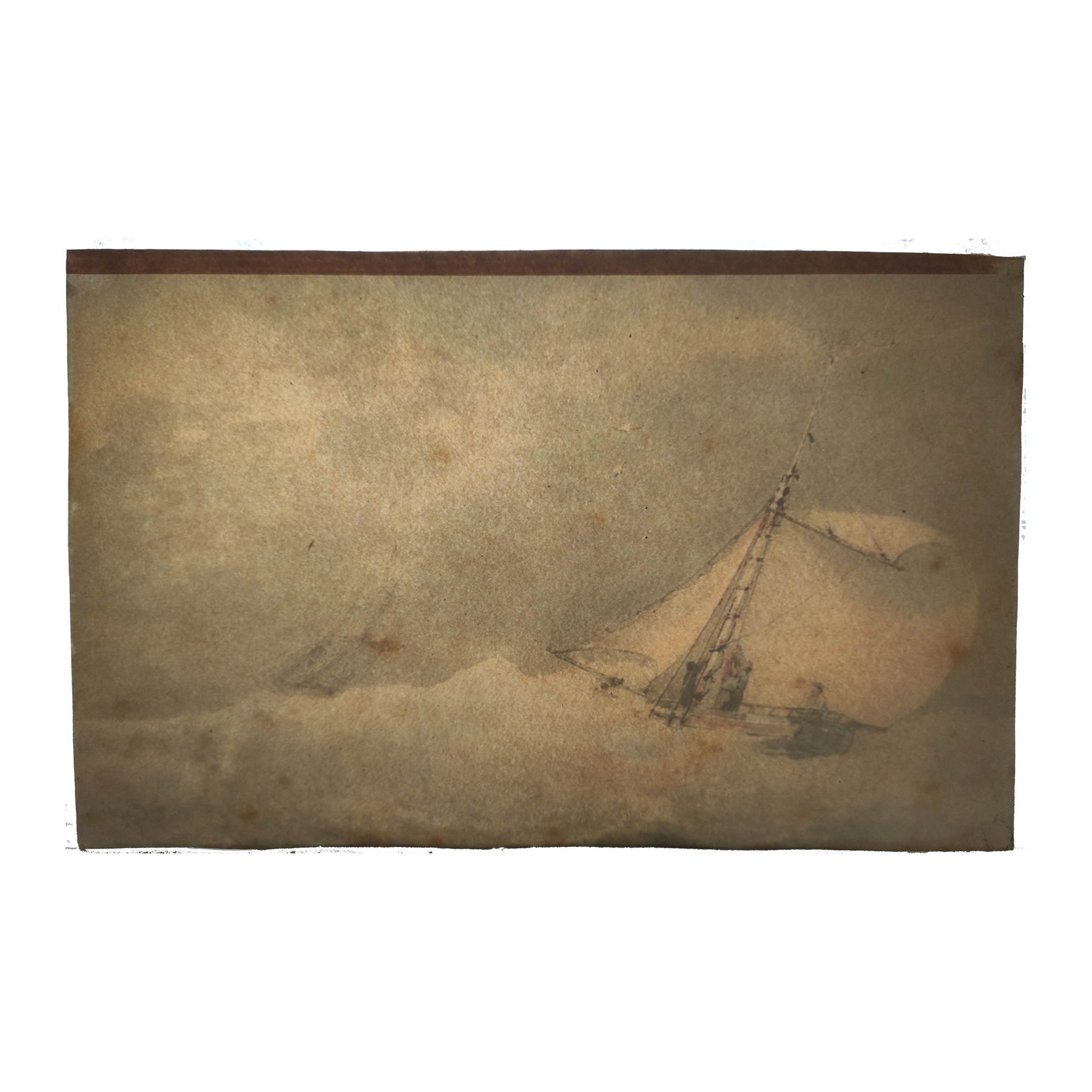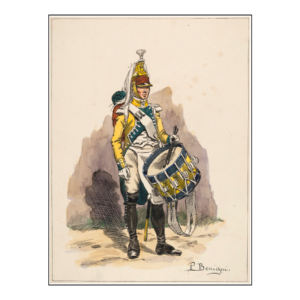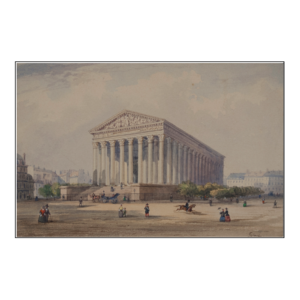Théodore Gudin
Paris 1802 – Boulogne-sur-Seine 1880
Sailboat in the wave
Watercolor.
130 x 206 mm – 5 1/8 x 8 1/8 in.
Signed lower right in pencil T. Gudin.
Like his brother Louis, Théodore showed an early and natural disposition for drawing but his mother, the widow of an Empire general, could not afford to provide both her sons with artistic studies. Louis having chosen to become a painter, Théodore decided to embark for three years on the American brick The Manchester. After a stay in New York where he met with general Lallemand and Jérôme Bonaparte, he took part in rough cod fishing in Newfoundland. Escaping yellow fever, he finally came back to France and decided to try painting. He entered Girodet’s atelier, joined Gros’s a few years later and “thought he had to give up classical traditions to join the Romantics” (p. 33). A winner of the gold medal as early as his second appearance at the Salon, in 1824, then unanimously praised for his Burning of the Kent at the 1827 Salon, this “simple young man, silent, apparently carefree of the attention of which he [was] rightly the subject” quietly worked his way to remarkable success in the artistic world and in society (Journal intime de Cuvillier-Fleury, la famille d’Orléans au Palais- Royal, 1828-1831, Paris, Plon-Nourrit, 1900-1903, t. I, p. 5).
He was appointed first painter of the Royal Navy and participated in the Algiers expedition of 1830, then in 1844, received from Louis-Philippe the commission to illustrate the naval history of France in 97 paintings for the Museum of French History in Versailles. He continued to excel in seascape, landscape, naval scenes or shipwrecks, for which he was compared by art critics to Claude Lorrain or Joseph Vernet. He made a place for himself in the world of the European aristocracy, was granted the title of Baron by Louis-Philippe to whom he was very close, and came to lead unofficial diplomatic missions in the Netherlands, Russia and Germany. However, his success in society aroused a certain suspicion of the artistic world, which no longer appreciated his painting in the same way, perhaps attributing the success of his artistic career to his connections.
Condition report – A few stings at the top right and bottom left
